Introduction
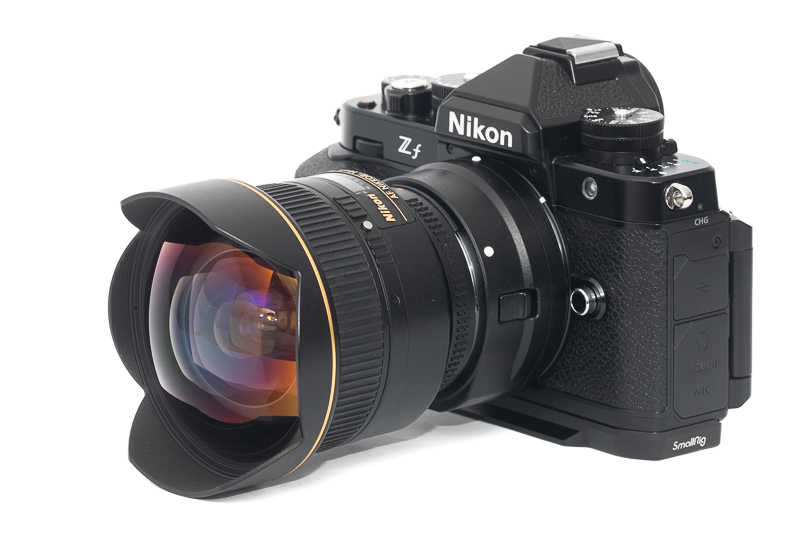
Released in 2000, the Nikon AF 14mm 2.8D is still the widest auto focus prime lens sold under the Nikon brand to this day. As some of the recent Z-mount lenses, this is also a rebranded Tamron lens though. The existing reviews didn’t paint a clear picture, so I decided to have a closer look at it myself.
Sample Images
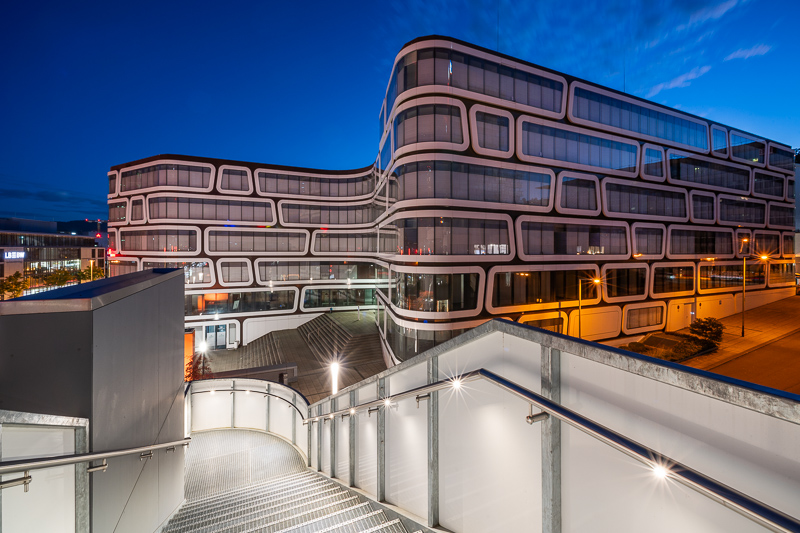
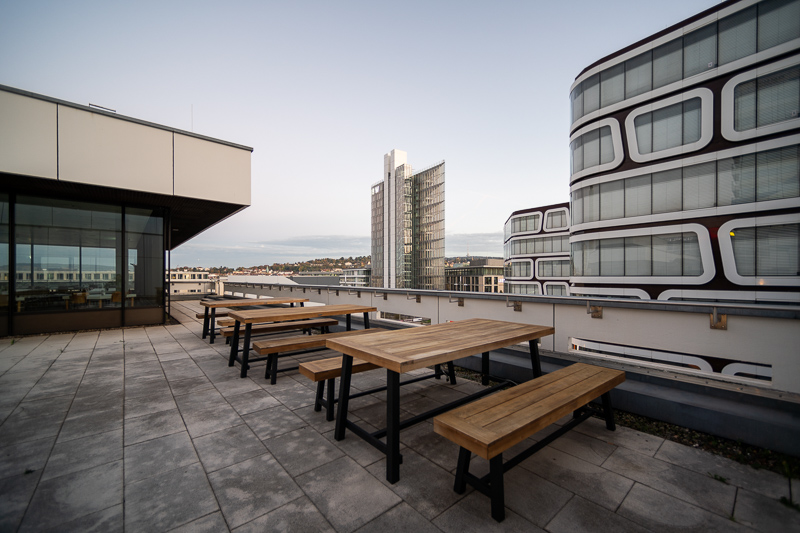
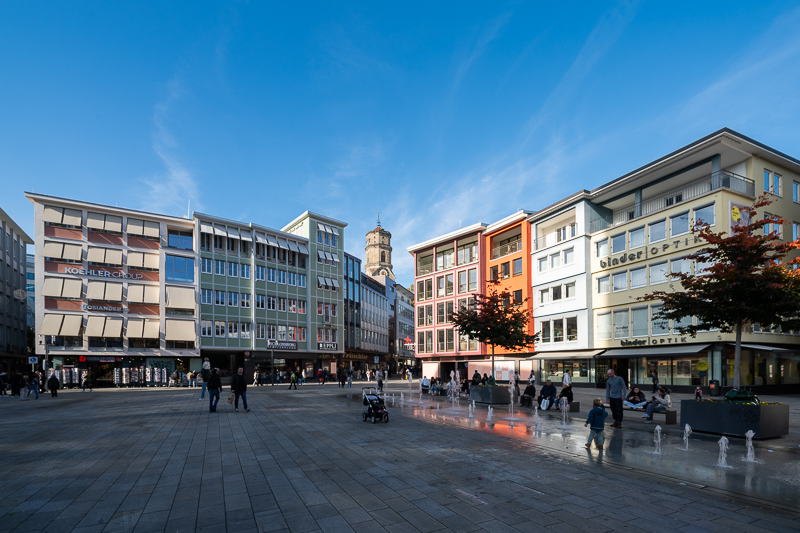

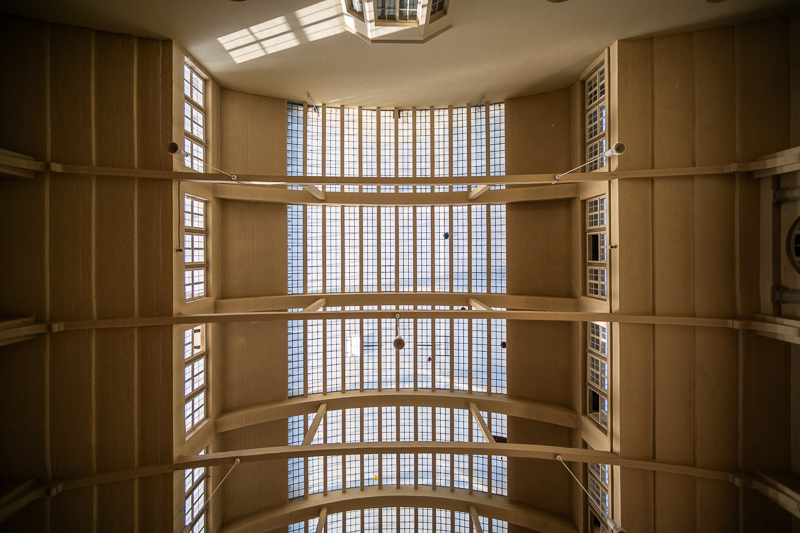

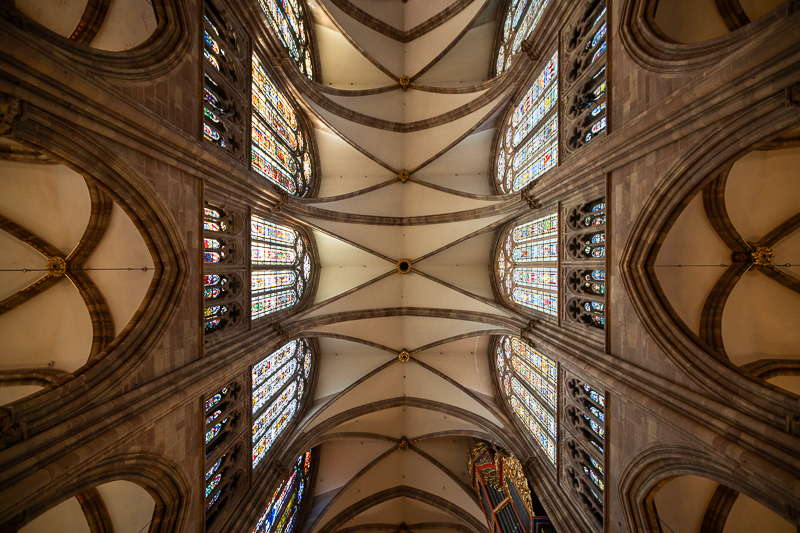
Most of the sample images in this review can be found in full resolution here.
Contents
Specifications
This lens is also available under the Tamron brand with same optics, a different (worse) aperture diaphragm and allegedly worse coatings. The Nikon version has the following specifications:
-
- Diameter: 87 mm
- Field of view: 114° (diagonally)
- Length: 87 mm
- Weight: 661g (without caps)
- Filter Diameter: rear gel
- Number of Aperture Blades: 7 (straight)
- Elements/Groups: 14/12
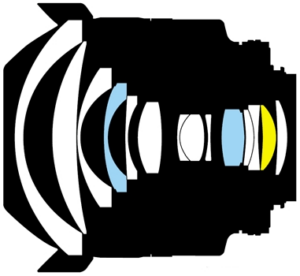
- Close Focusing Distance: 0.20 m
- Maximum Magnification: 1:7.2
- Mount: Nikon F
buy used from ebay.com | ebay.de (affiliate links) starting at $450
Handling / Build Quality
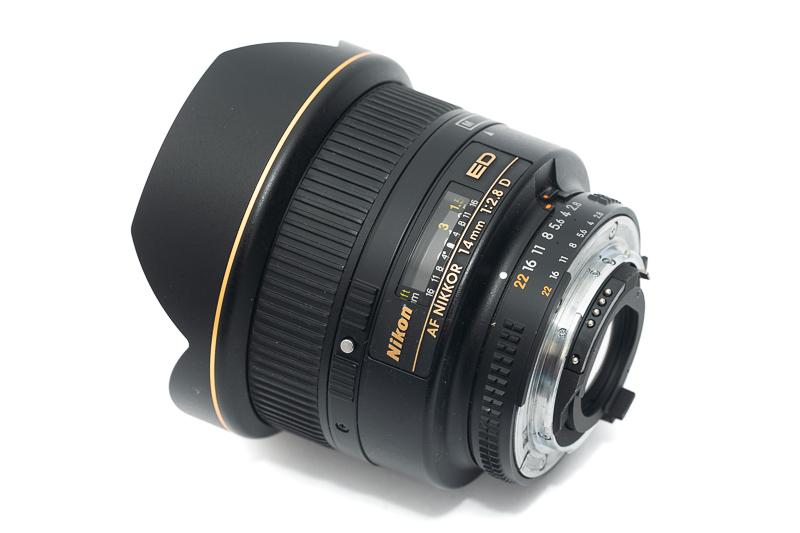
As I have said before, I don’t think the AF-D era was the best for Nikon, as by late 1995 – 5 years before this lens was released – Canon already had a full lineup of technologically advanced and easier to use USM driven lenses, while Nikon was still relying on the inferior screw-driven AF. What is even more troublesome, already in 1999 Nikon started releasing non-super tele lenses with the comparable AF-S technology, yet this lens did not get it.
The focus ring rotates 90° from the minimum focus distance of 0.20 m to infinity. The manual focus experience is pretty good for an AF lens, probably the best I came across in an AF-D lens so far. When changing the direction of rotation of the focus ring many of Nikon’s AF(-D) and AF-S lenses show some slack, here it is almost unnoticeable.
The aperture ring is situated towards the rear of the lens and features equidistantly spaced full-stop click stops, as is typical for Nikon’s lenses with an aperture ring.
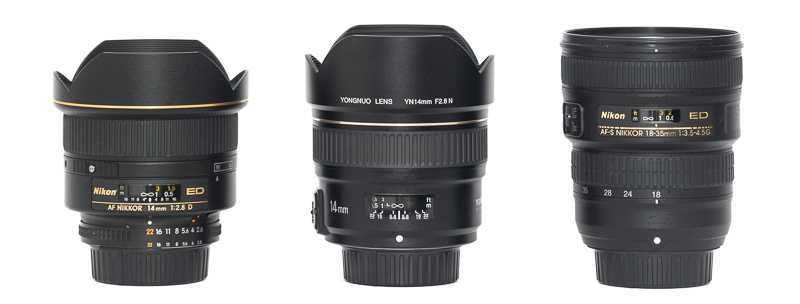
Yongnuo also released a 14mm 2.8 AF lens which is similarly sized but noticeably heavier.
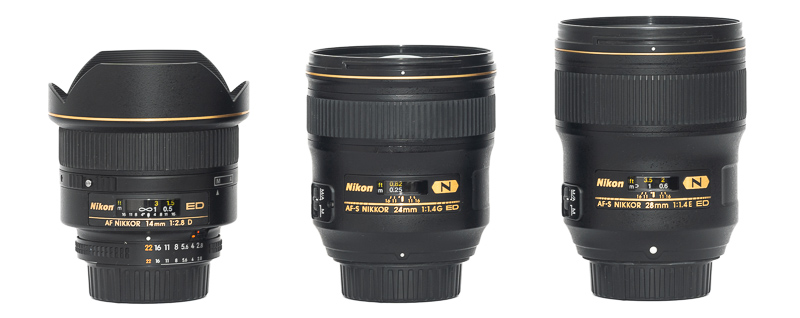
Sadly, in the AF-S era we never saw a prime wider than 20mm.
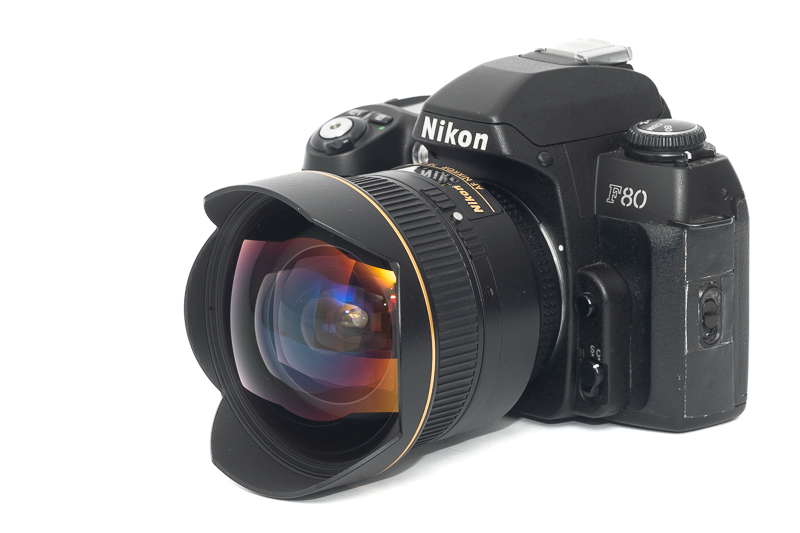
The autofocus and aperture control both worked flawlessly on my Nikon F80. This is generally a lens that is compatible to all of Nikon’s AF fullframe (D)SLRs as well as the Ai standard manual focus SLRs. On the FTZ II adapter exif transmission and setting the aperture worked as well, but here the lens needs to be focused manually.
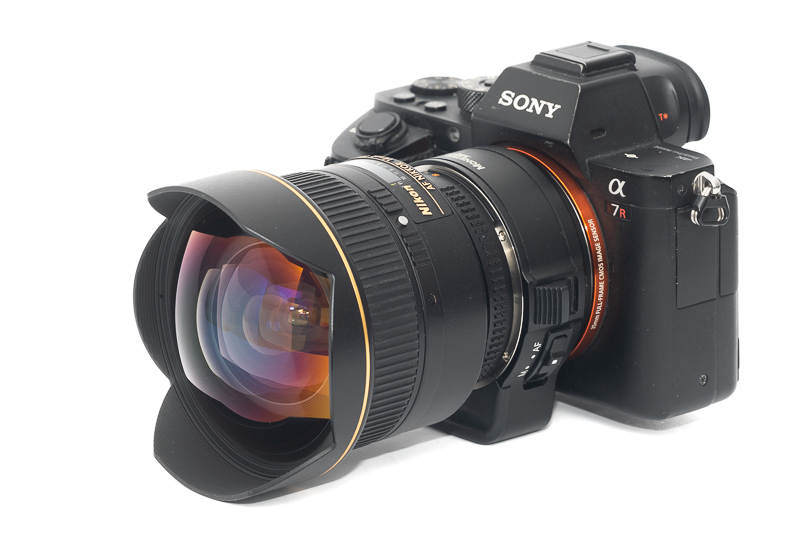
I also tried if the AF works via the Monster LA-FE2 adapter on a Sony camera, and it did, but as that adapter is a little bit too short it will hurt this lens’ image quality.
Vignetting
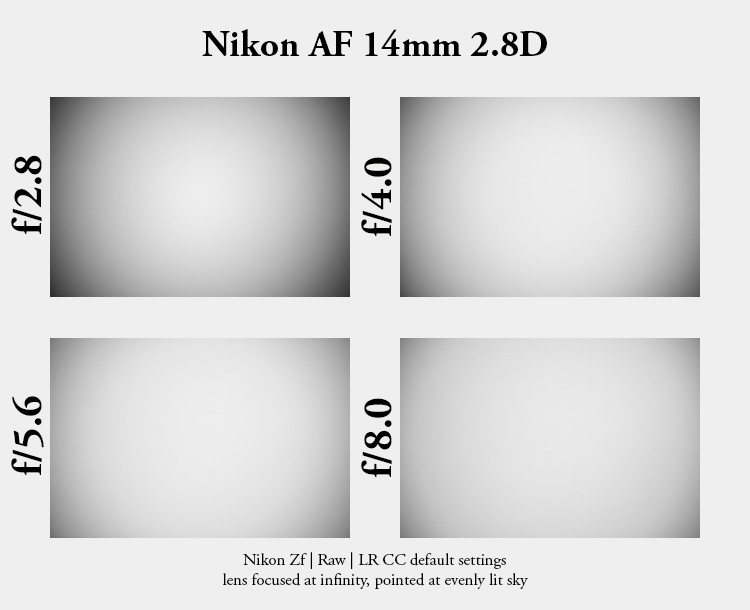
| f/2.8 | 3.8 EV |
| f/4.0 | 2.9 EV |
| f/5.6 | 2.3 EV |
| f/8.0 | 2.0 EV |
| f/11 | 1.8 EV |
Generally I found that ultra wide angle lenses with a bulbous front element are often at an advantage when it comes to the vignetting figures, but this is sadly not the case here, as there are almost 4 EV vignetting at the maximum aperture.
By comparison, the Nikon AF-S 14-24mm 2.8G shows “only” 2.5 EV vignetting at 14mm 2.8 and only 1 EV stopped down to f/11.
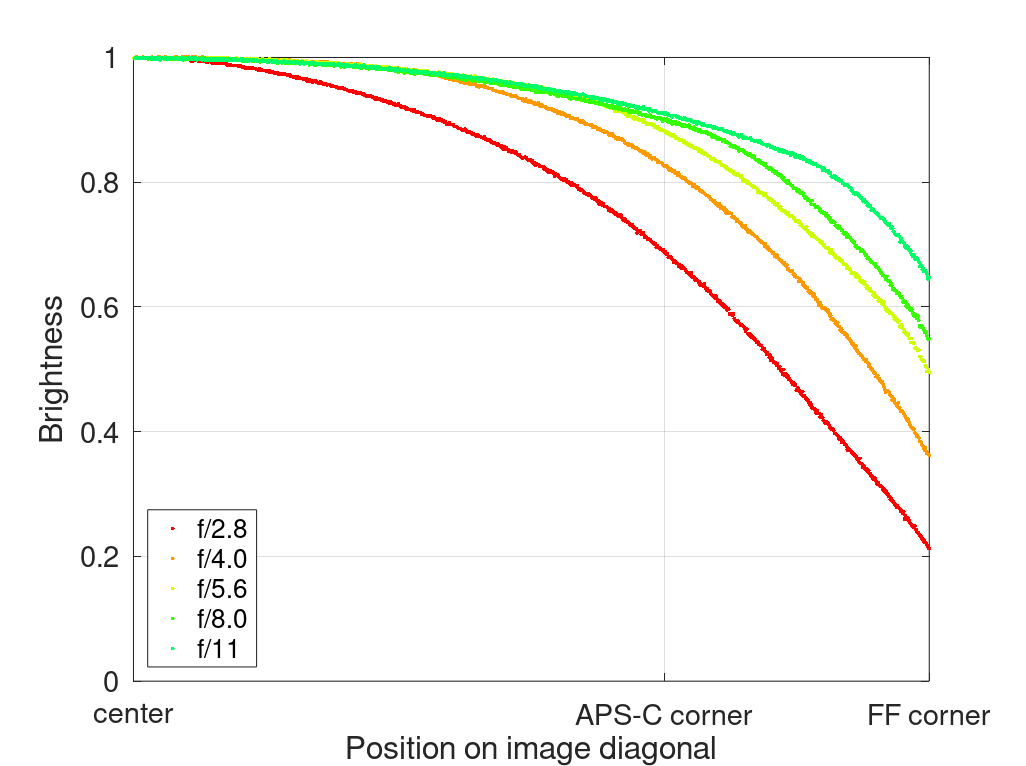
It is recommended to have a look at this article first to get an idea how this brightness graph works.
Sharpness
MTF Graphs
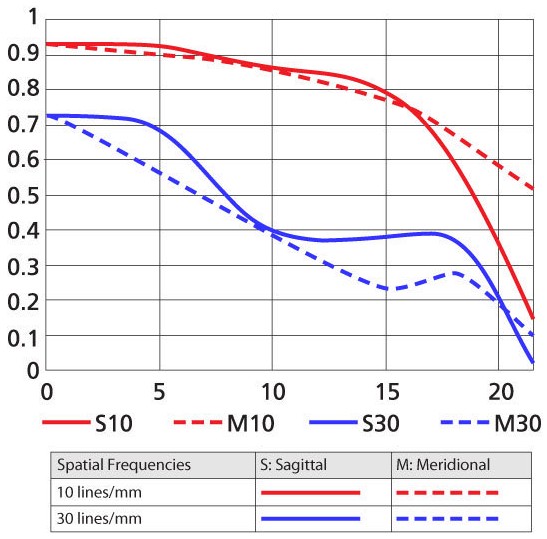
Well, the MTF graphs don’t exactly promise great image quality. While the center looks good, there is a steady decline towards the corners and the corners at f/2.8 must look pretty awful according to these graphs, so let’s have a closer look in the following section.
infinity (42mp Sony A7rII)
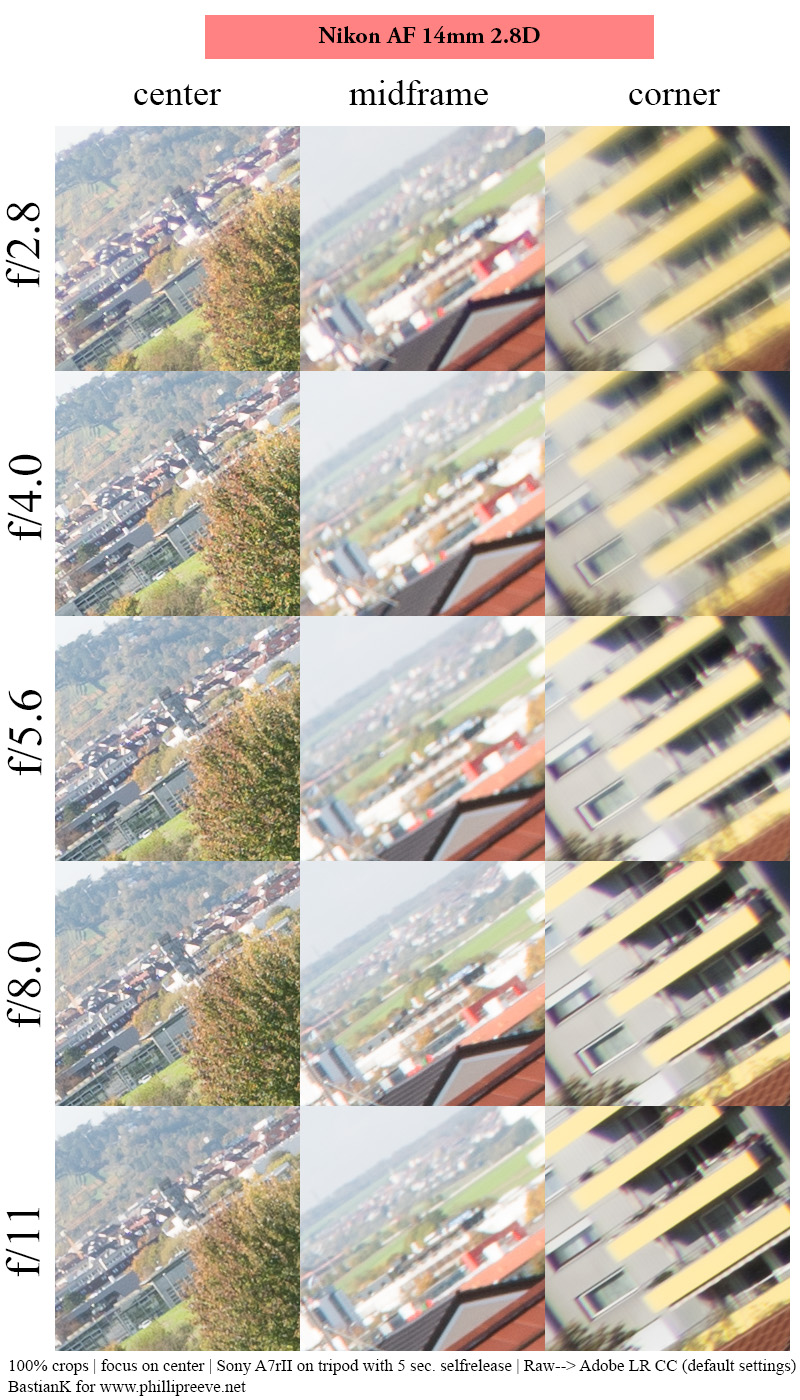
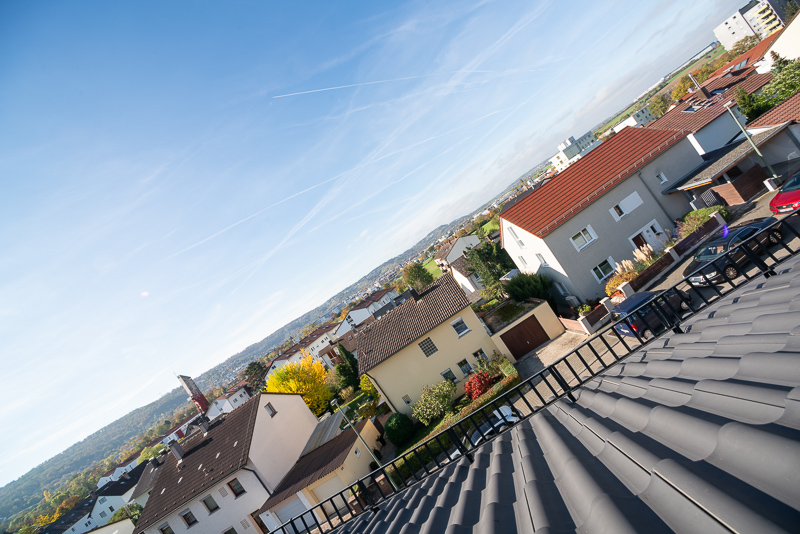
Well, I can’t say the MTF graphs weren’t accurate. At f/2.8 the center looks good, but midframe and corners look pretty bad. Stopped down to f/11 the corners look decent, but the midframe still doesn’t look good. Simply not a good performance.
The Nikon AF-S 14-24mm 2.8G performs magnitudes better here. At f/2.8 there is only a little softness in the corners, and by f/5.6 you get great across frame performance at infinity. This older prime simply doesn’t stand a chance.
As this lens features a floating elements design the correct flange focal distance is crucial to achieve optimal performance with this lens, so when using too short adapters it may show worse image quality.
close (0.20m, 1:7.2)
Sony A7rII | Rayqual adapter | Nikon 14mm 2.8D | 100% crops from center
A bit softer at the maxium aperture, but generally a good performance here. Interestingly this lens showed less field curvature at close distances than at infinity, not the greatest design decision if you ask me.
Flare resistance
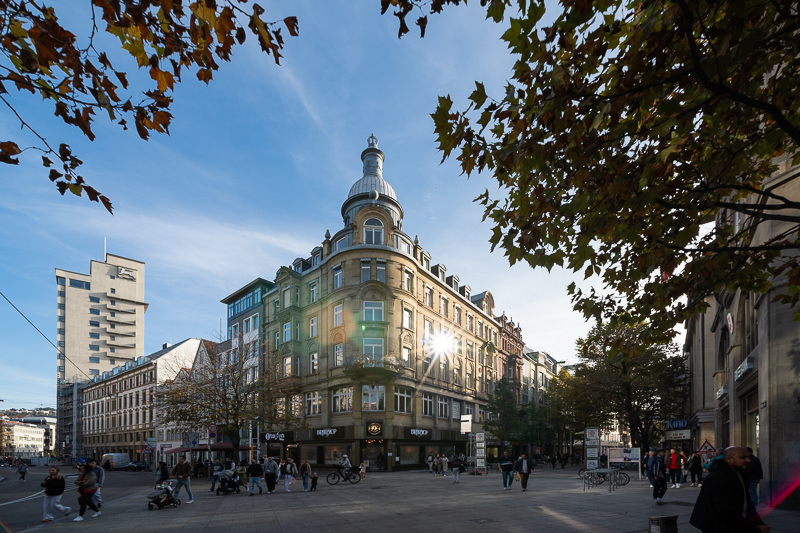
Many of the ultra wide angle lenses with bulbous front element are facing some challenges here, but this was certainly worse than expected.
Nikon Zf | FTZ II | Nikon AF 14mm 2.8D | f/2.8
It doesn’t really matter if a strong point light source is inside or outside the frame, you will almost always encounter some artefacts.
Nikon Zf | FTZ II | Nikon AF 14mm 2.8D | f/11
While the performance already isn’t great at f/2.8, it is awful stopped down. And as you have seen before, this lens needs to be stopped down for somewhat decent sharpness.
This is actually one of the worst performances I came across so far, comparable to older Tokina lenses who are actually famous for being really bad here.

Even in situations where I did not expect to encounter any flare issues, still some artefacts showed up. If looking closely at the pictures in this review, you can find some kind of artefact in almost any of them.
Coma
Sony A7rII | Rayqual adapter | Nikon AF 14mm 2.8D | 100% crops from extreme corner
This Nikon AF 14mm 2.8D already features two aspherical elements and usually these are employed to correct Coma, but I can’t say the engineers succeeded at that, as I see rather big artefacts until stopped down to f/8.0.
The Nikon AF-S 14-24mm 2.8G shows a better performance at f/2.8 than this prime lens at any aperture.
Distortion
Now aspherical elements can also be used to correct distortion, so if they didn’t do a good job at correcting Coma, at least the distortion is low, right?
No, sadly that also isn’t the case. This lens creates a pretty nasty wavy distortion pattern and correction profiles are surely needed to get rid of it. Luckily Lightroom features a profile for this lens and I used it for pretty much all of the sample pictures.
Also here, the Nikon AF-S 14-24mm 2.8G, a more complex zoom lens, shows significantly less and easier to correct distortion.
Sunstars
Sony A7rIi | Rayqual adapter | 33% crops from center
Finally I can say something nice about this lens, as it produces actually nice, well defined sunstars from f/4.0 to f/22 thanks to its well aligned 7 straight aperture blades. Because the flare resistance is so bad, it is often not a particularly good idea to have strong point light sources in the frame though.
If you want to learn more about sunstars have a look at this article.
Chromatic Aberrations
lateral
Not too uncommon for ultra wide angle lenses – especially older ones – this Nikon AF 14mm 2.8D shows a high amount of lateral CA. The correction e.g. in Lightroom still does a good job, but some other aberrations (Coma/Astigmatism) are also present in the corners and they cannot be fixed as easily.
longitudinal
As this is a very wide and rather slow lens bokeh fringing is nothing to worry about.
When it comes to purple fringing, it is definitely there at f/2.8. Stopping down to f/4.0 helps, but as you can see this is just another testament to the awful flare resistance.
Conclusion
good
|
average
|
not good
|
Sadly, I do not have a lot of nice things to say about this Nikon AF 14mm 2.8D. Not only by today’s standards its optical performance is subpar, already compared to the Nikon AF-S 14-24mm 2.8G from 2007 it looks awful. I really cannot think of any reason to still use this lens today. Have a look at the alternatives section to find out about some better options.
I still wish there had been an updated version in the AF-S era, to have a smaller and lighter alternative to the Nikon AF-S 14-24mm 2.8G.
buy used from ebay.com | ebay.de (affiliate links) starting at $450
Alternatives
SLR Designs
Tamron AF 14mm 2.8 SP:
Same optics. As the Tamron lens was released a year earlier my guess is that Nikon urgently needed an ultra wide lens for their newly released APS-C D1 digital camera, so instead of designing a decent one themselves (and Nikon was generally really good with ultra wide angle lenses) they just rebranded this Tamron lens. I cannot recommend to buy either of them.
buy used from ebay.com | ebay.de (affiliate links) starting at $200
Samyang 14mm 2.8 MF:
In terms of optical performance this Samyang lens is much better and usable from f/2.8. The MKI version can be found for little money these days and there has also been an updated MKII version with improved aperture diaphragm. I plan on having a look at that one in the near future.
buy MK II new from amazon.com | amazon.de | B&H | ebay.com | ebay.de (affiliate links) for $500
buy MK I used from ebay.com | ebay.de (affiliate links) starting at $180
Yongnuo 14mm 2.8 AF:
Yongnuo offers a 14mm 2.8 with AF that looks very similar to this Nikon lens. It features a different optical design, but it isn’t a great performer either and too heavy at almost 800g. Also not recommended.
buy new from B&H | ebay.com | ebay.de (affiliate links) for $550
Sigma 14mm 1.8 Art:
The undoubtedly best performing (and fastest) ultra wide angle prime for DSLRs has been produced by Sigma. The performance is good, but the price is high and it is even heavier than the Nikon AF-S 14-24mm 2.8G.
buy from ebay.com | ebay.de | amazon.com | amazon.de | B&H (affiliate links) for $1599 (new) or starting at $1000 (used)
Nikon AF-S 14-24mm 2.8G:
If you want an F-mount 14mm lens with AF poduced by Nikon, the Nikon AF-S 14-24mm 2.8G is surely the one to buy. It was way ahead of its time and because Nikon made so many, it can often be found for less on the used market than this bad 14mm 2.8D.
buy from ebay.com | ebay.de | amazon.com | amazon.de | B&H (affiliate links) for $1750 (new) or starting at $600 (used)
Laowa 12mm 2.8 Zero-D:
Laowa gave us the widest f/2.8 prime lens for F-mount. It offers similar performance to the Nikon AF-S 14-24mm 2.8G and it is even a bit wider. A much better choice than this Nikon AF 14mm 2.8D.
buy from manufacturer’s online shop | ebay.com | ebay.de | amazon.com | amazon.de | B&H (affiliate links) for $849 (new)
Mirrorless Designs
You can find many of the modern ultra wide angle zoom as well as prime lenses discussed in our Guide to Ultra Wide Angle Lenses for the A7 Series.
If you are looking for a fast ultra wide angle prime lenses you might want to check out are the Laowa 15mm 2.0, Sony FE 14mm 1.8 GM, Viltrox FE 16mm 1.8 AF or even the Sigma 14mm 1.4 Art DG DN.
Sample Images
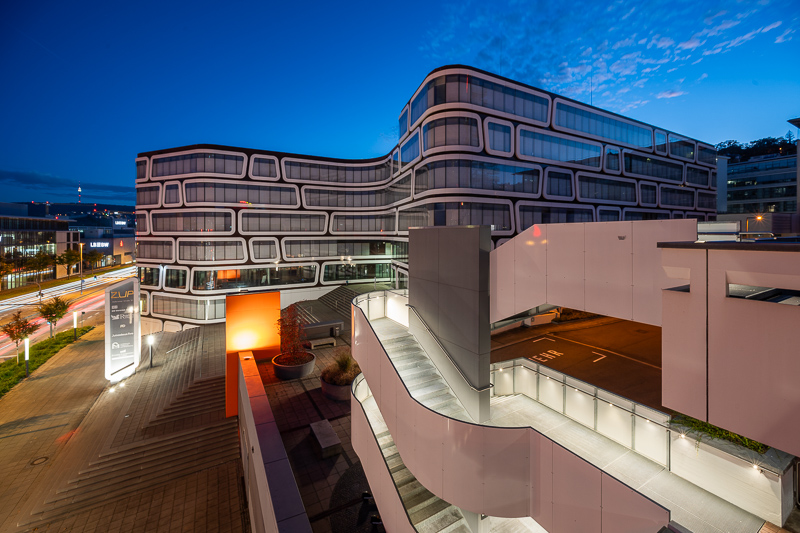
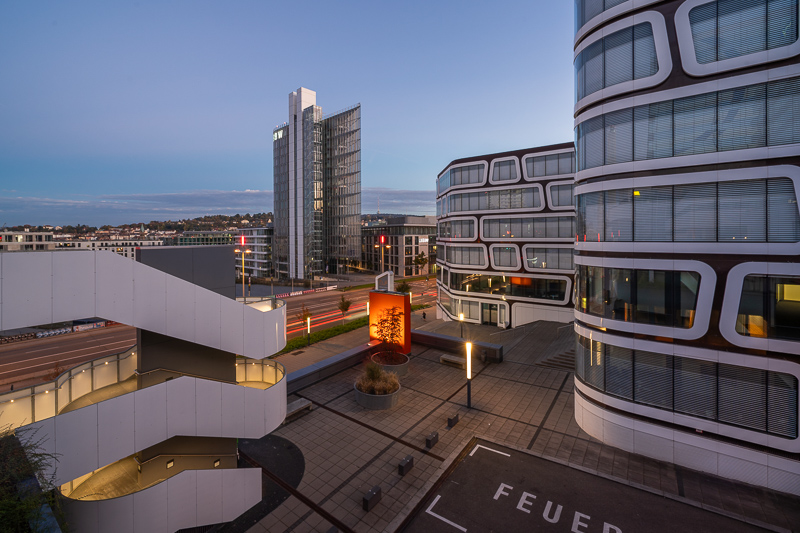
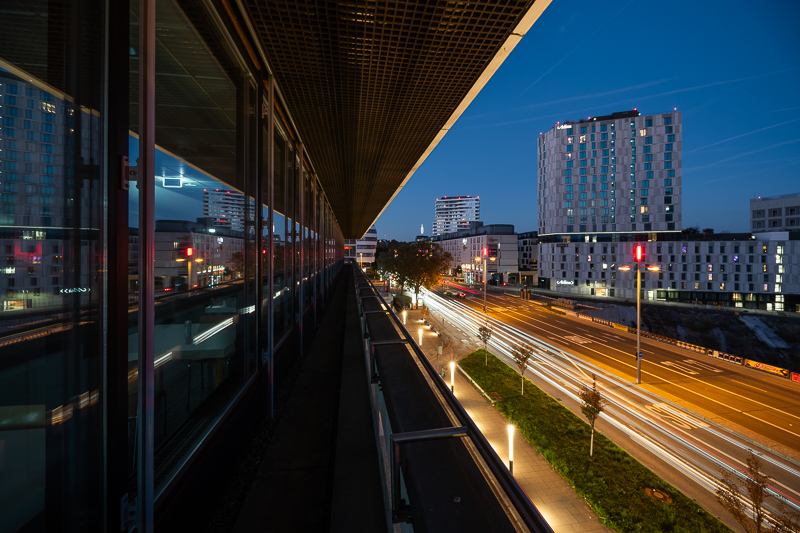
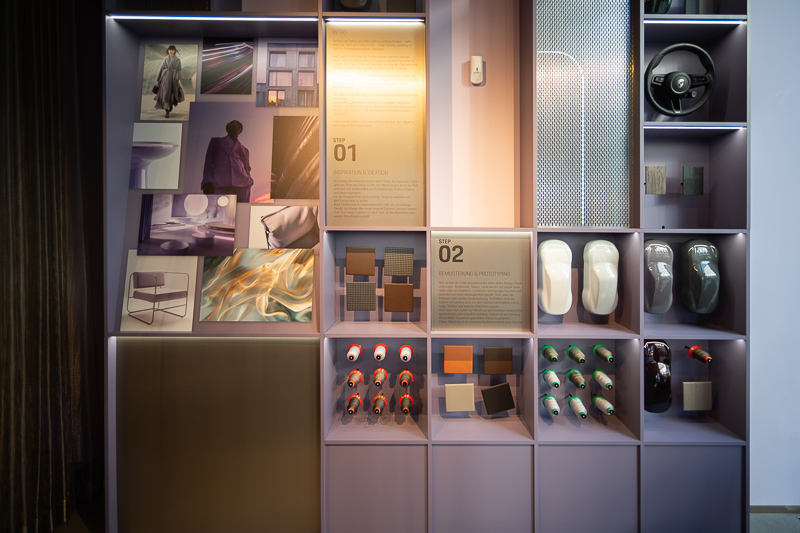






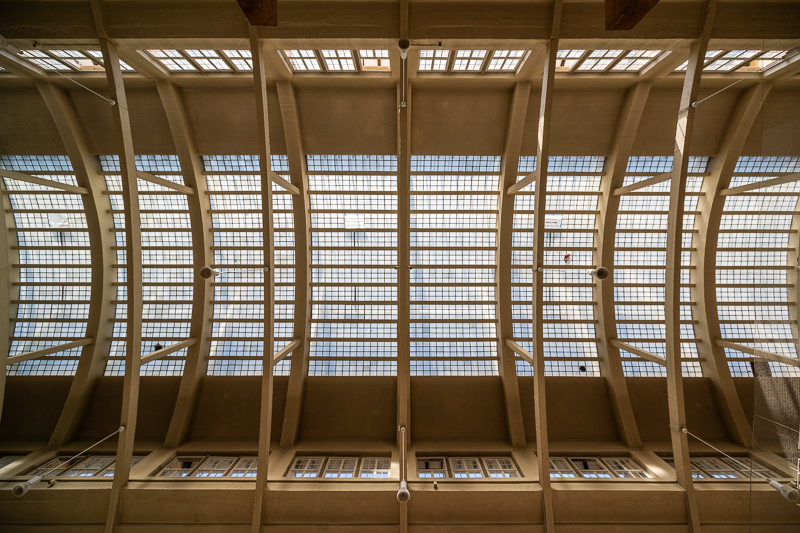
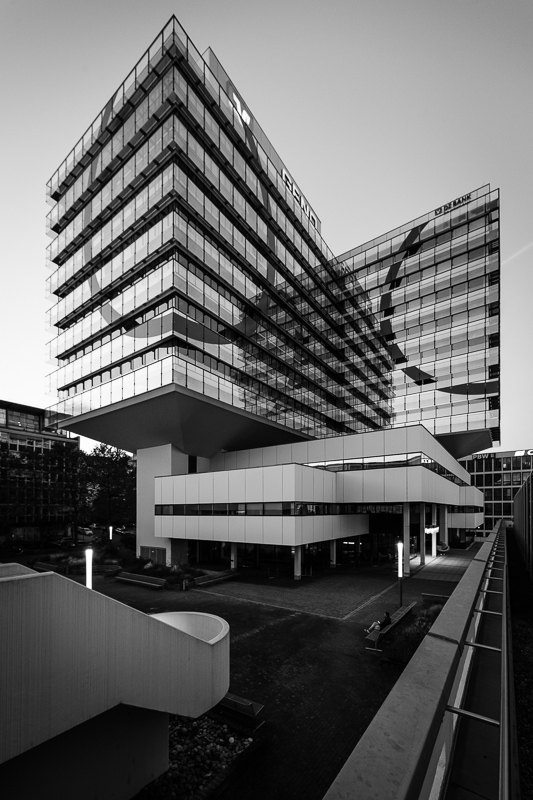
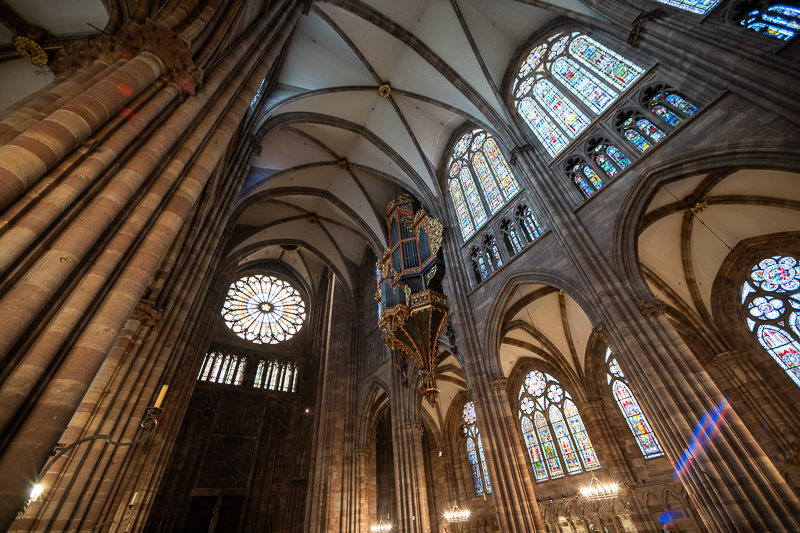

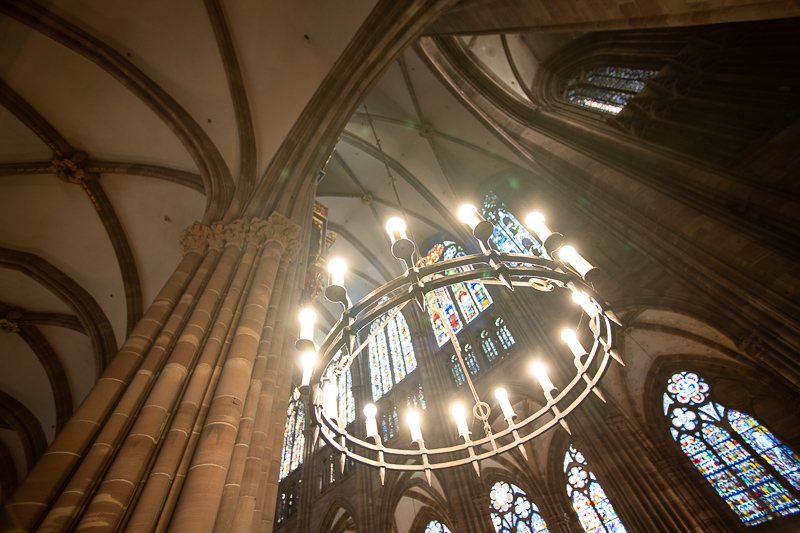
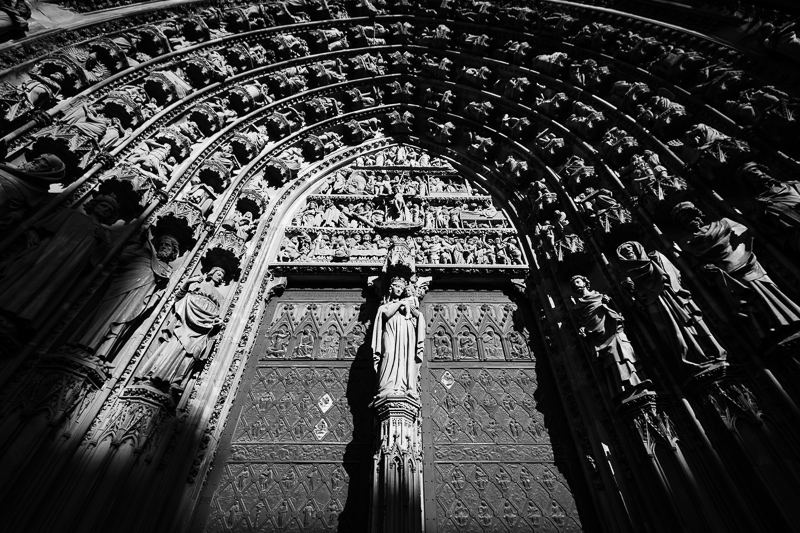
Most of the sample images in this review can be found in full resolution here.
Further Reading
- Guide to 9-18mm Ultra Wide Angle Lenses for Sony fullframe E-mount Cameras
- Review: Laowa 9mm 5.6 – The World’s Widest fullframe lens
- Review: Sony FE 12-24mm 2.8 GM
- Review: Nikon AF-S 24mm 1.4G
- Analogue Adventures
Support Us
Did you find this article useful or just liked reading it? Treat us to a coffee!
![]()
![]()
![]() via Paypal
via Paypal
This site contains affiliate links. If you make a purchase using any of the links marked as affiliate links, I may receive a small commission at no additional cost to you. This helps support the creation of future content.
Latest posts by BastianK (see all)
- 2025 – Year in Review - December 23, 2025
- Review: Sony FE 70-200mm 4.0 G Macro OSS II - December 20, 2025
- Review: Viltrox AF 35mm 1.2 FE LAB - December 17, 2025
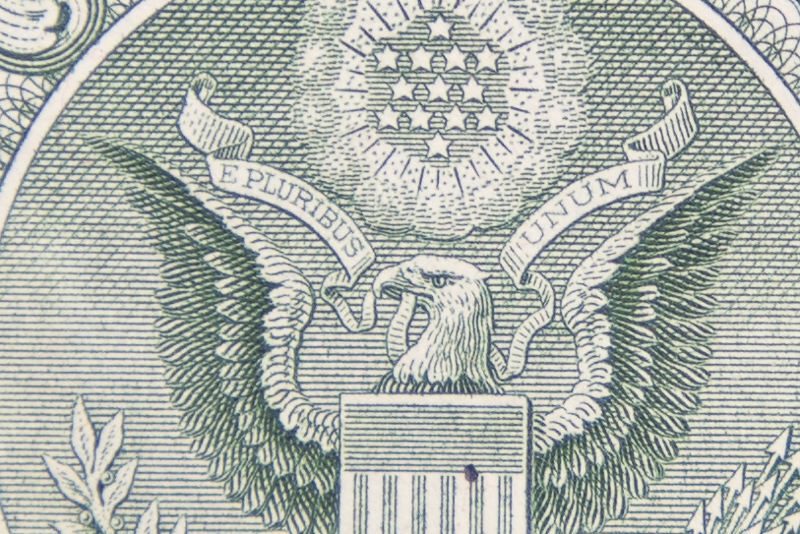


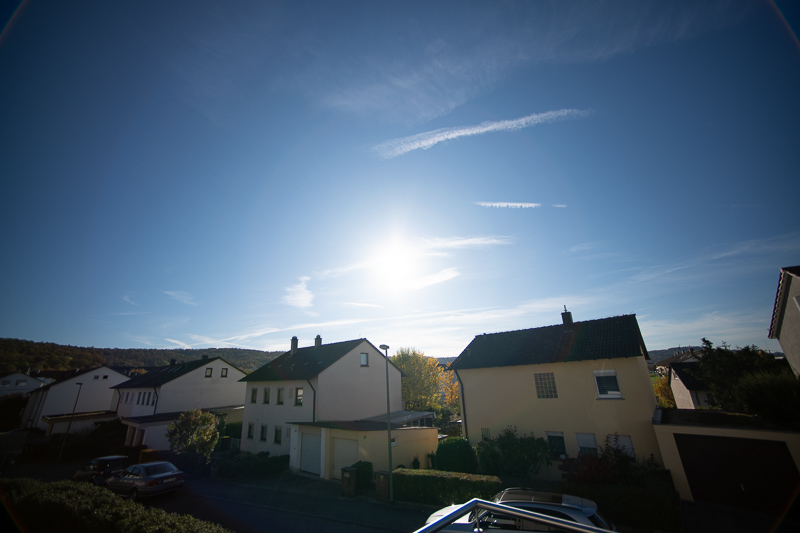
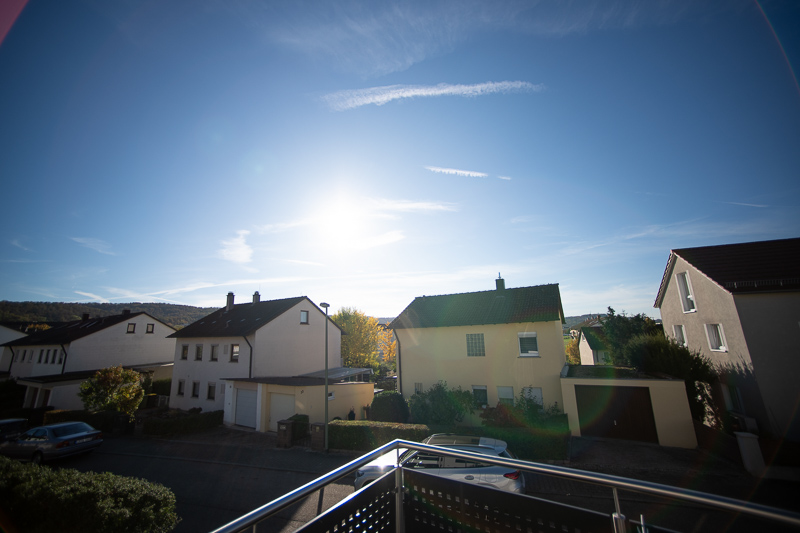
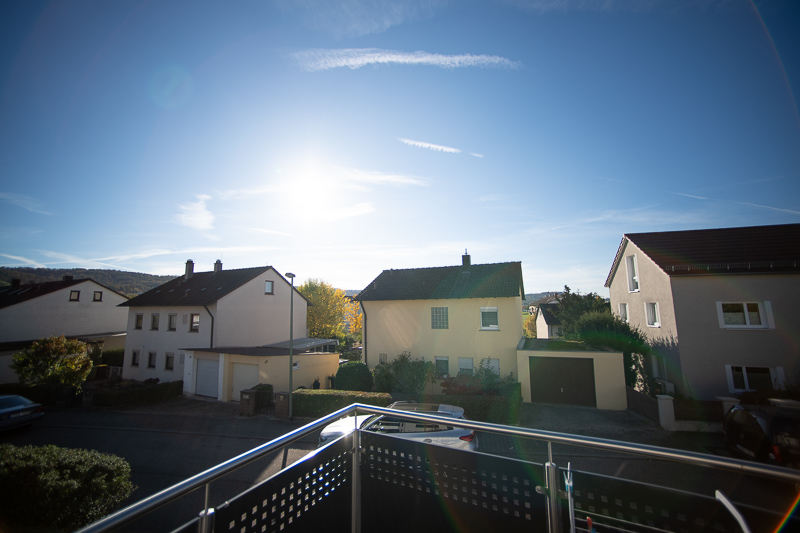
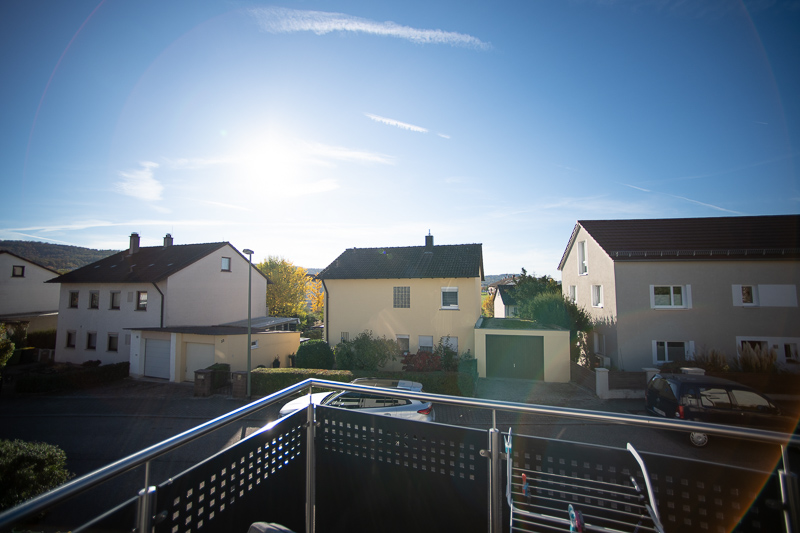
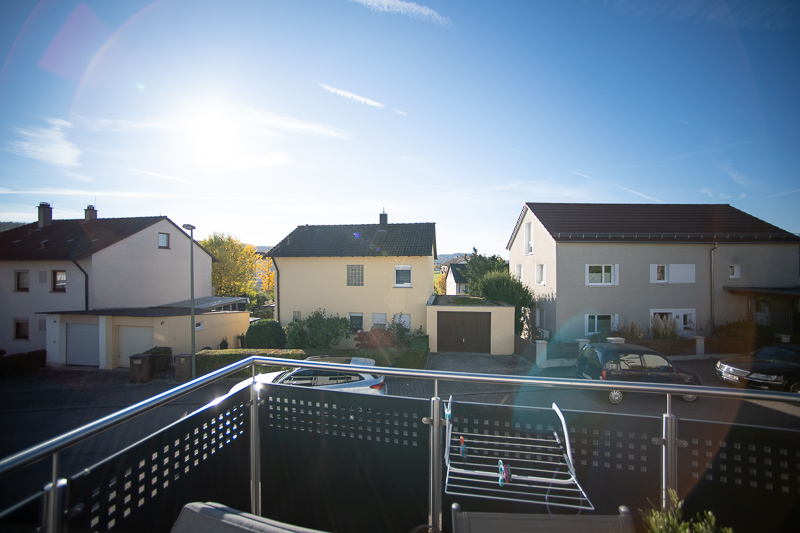
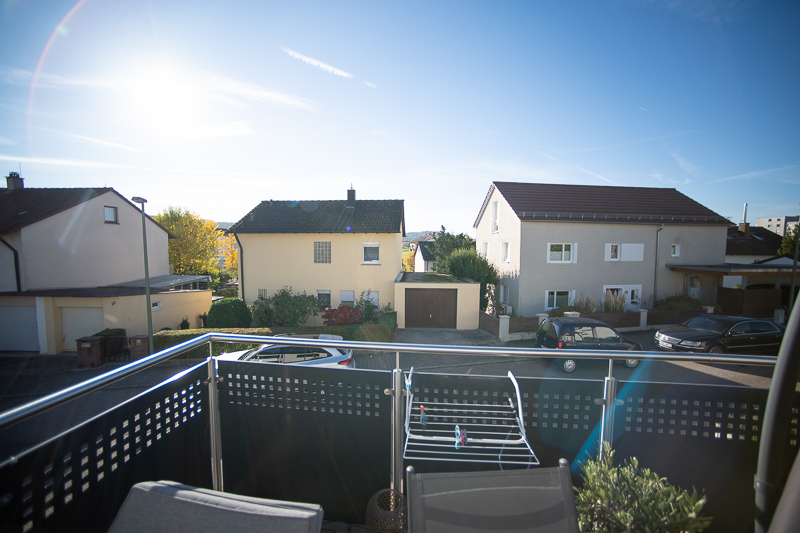
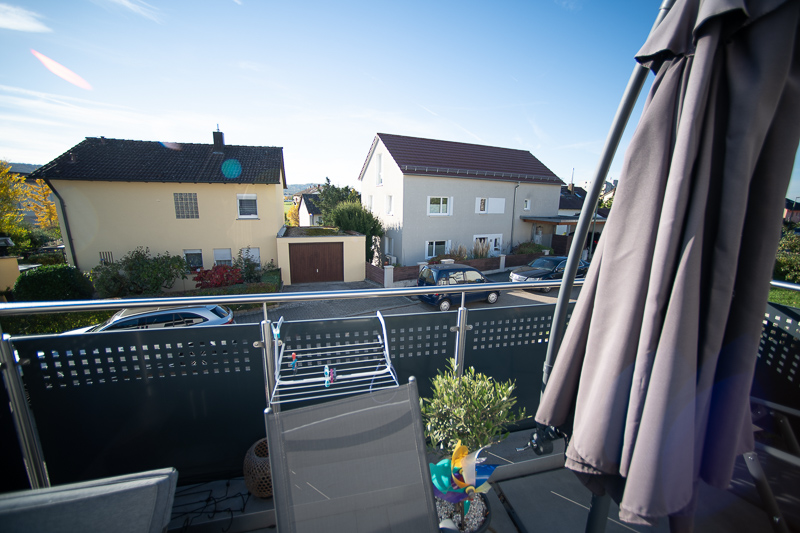
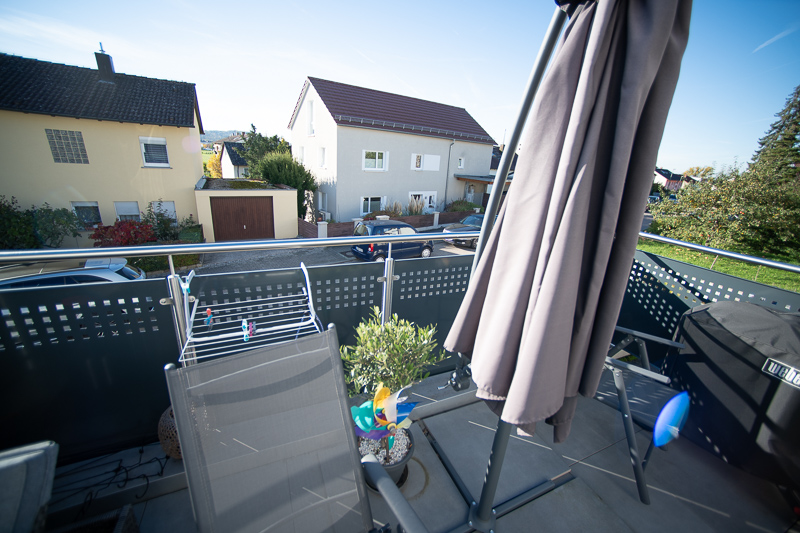
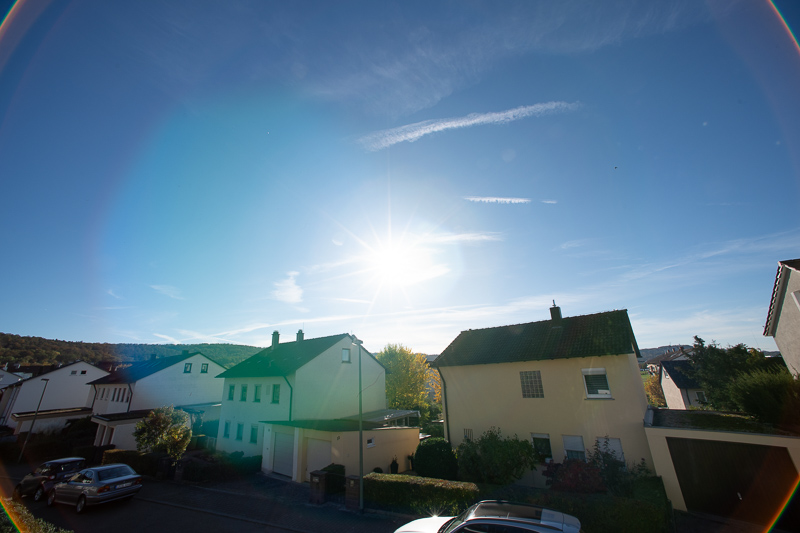
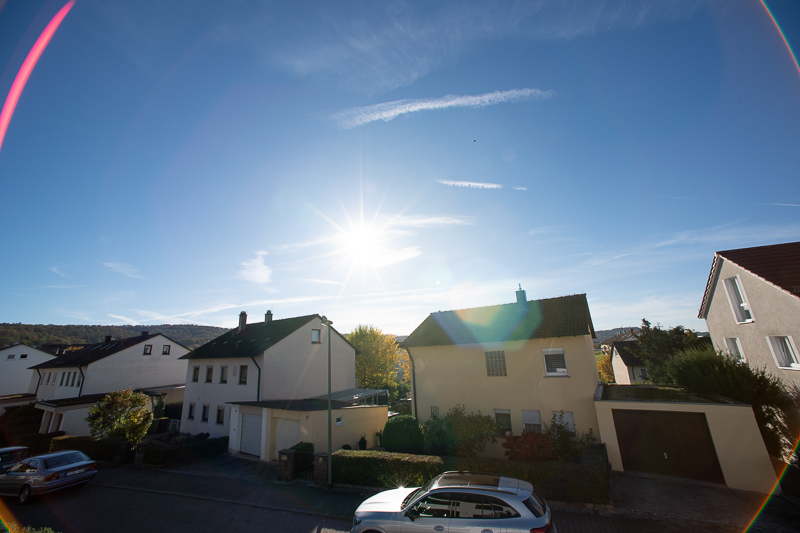
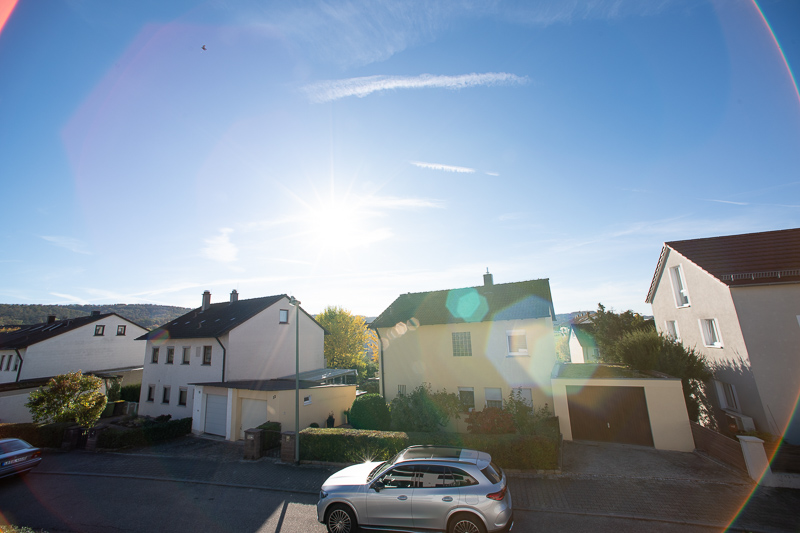
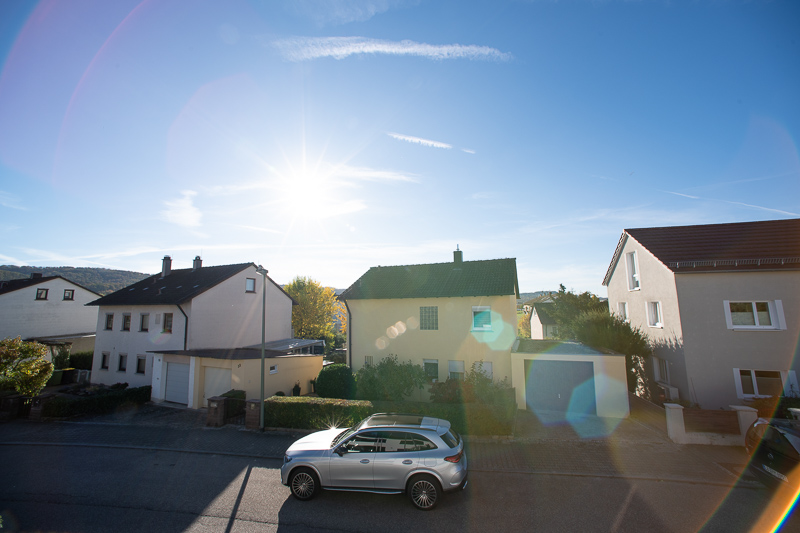
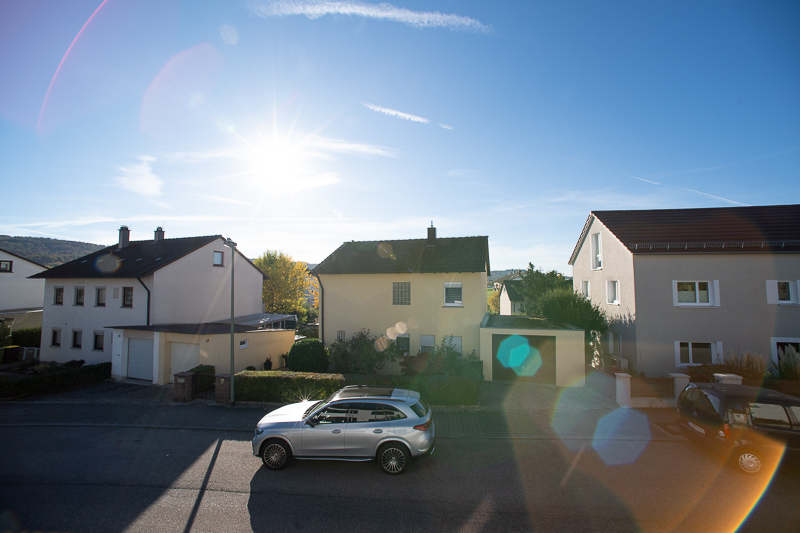
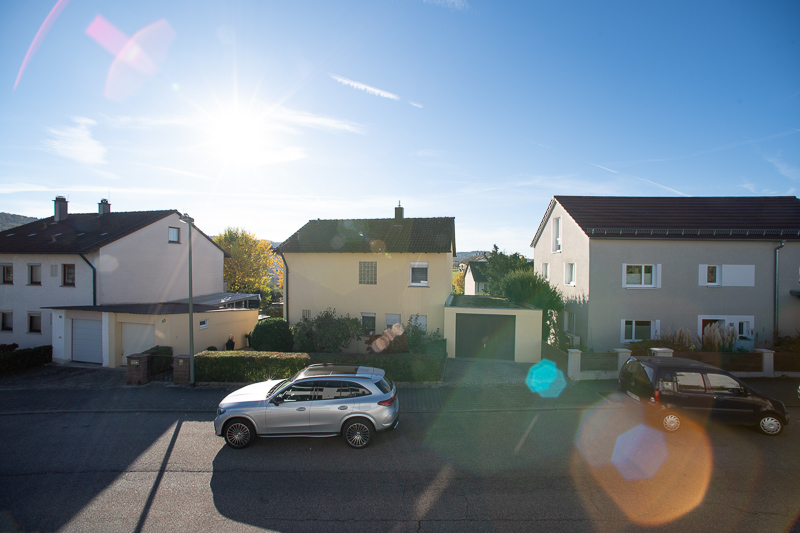
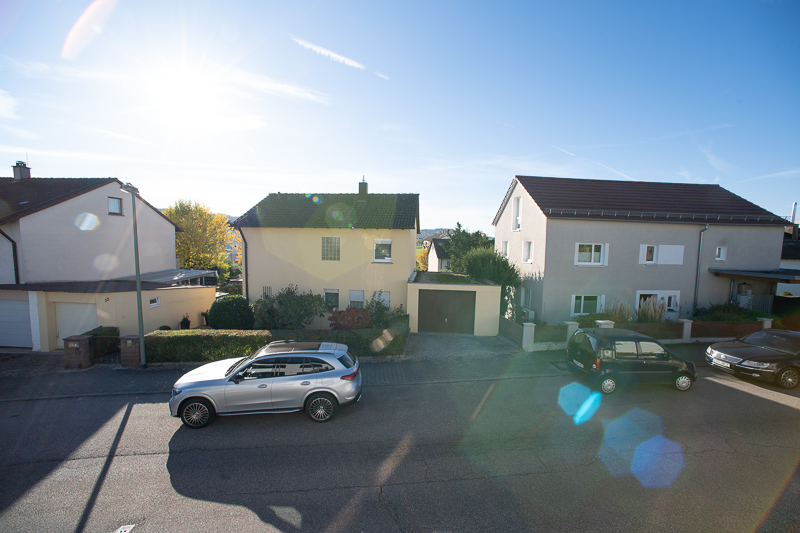
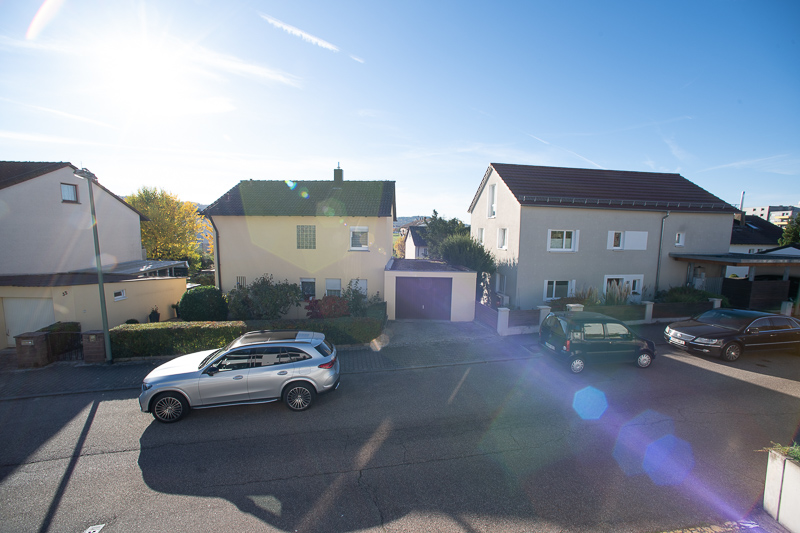
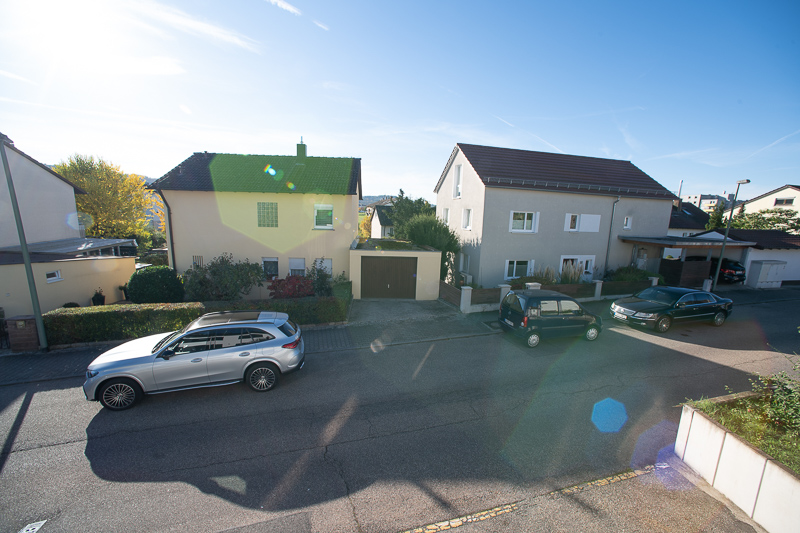
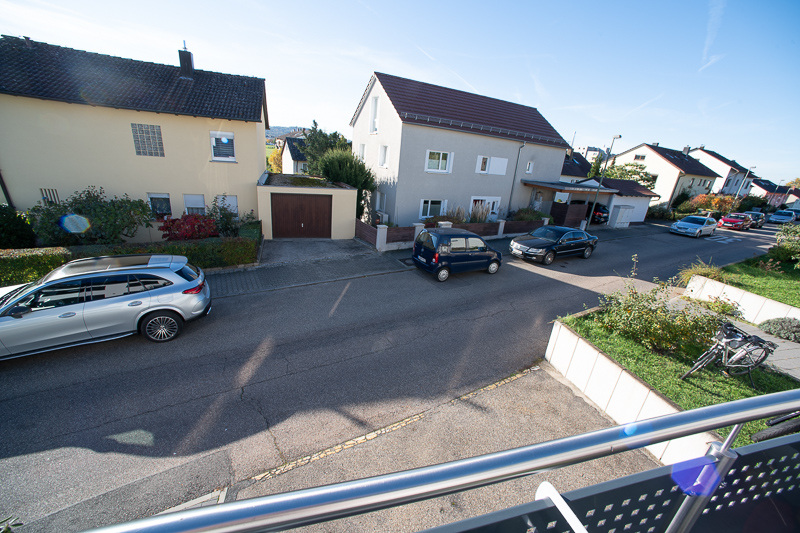
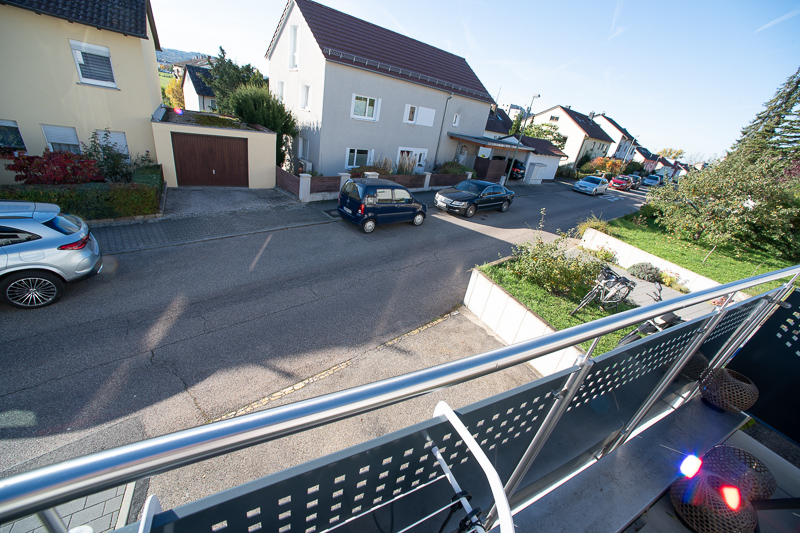
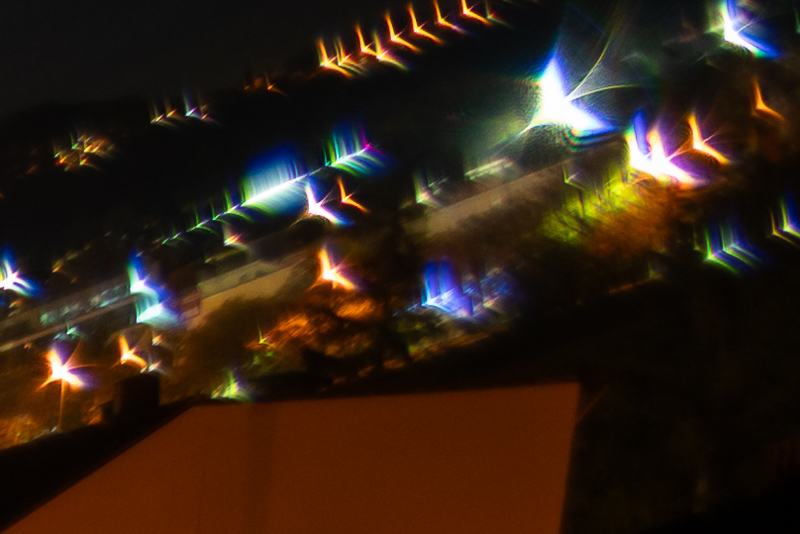
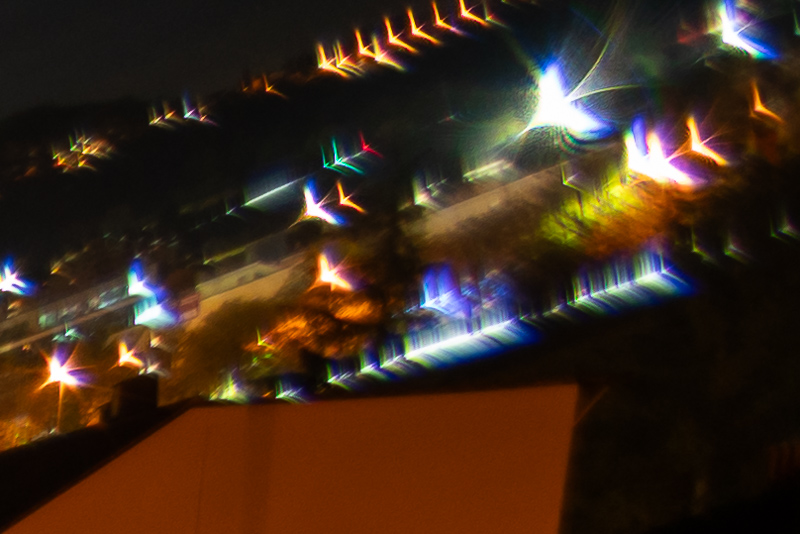
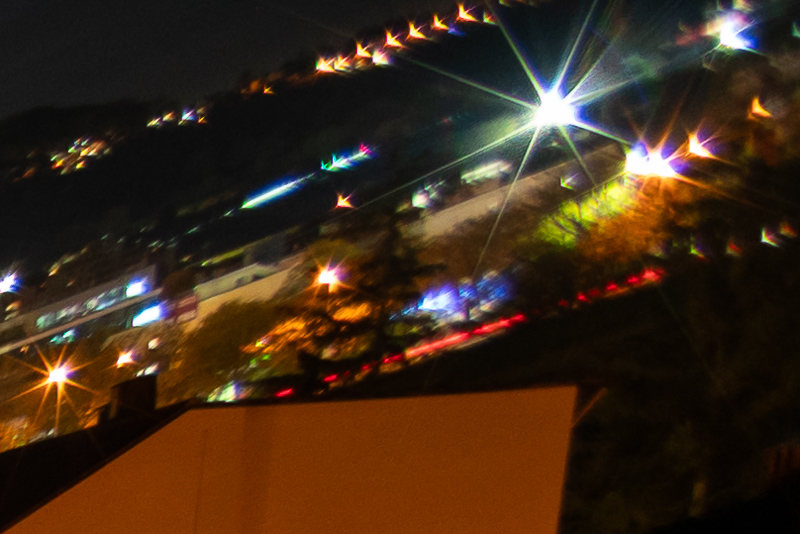
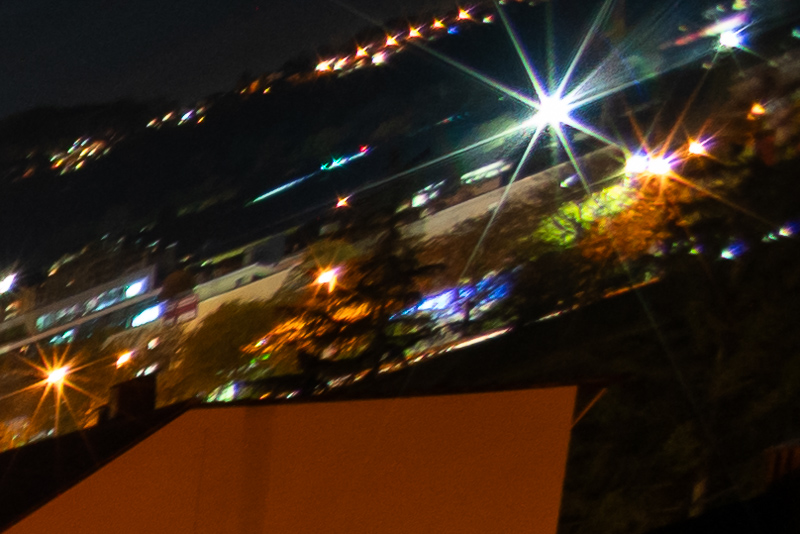
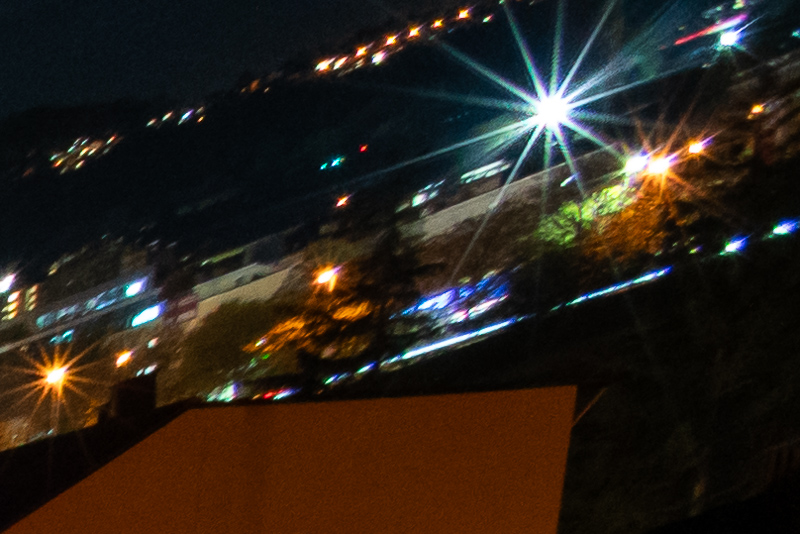

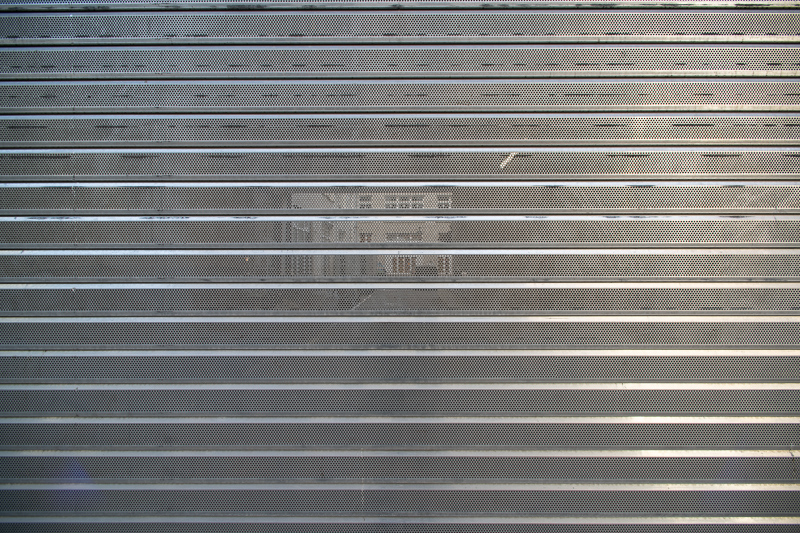
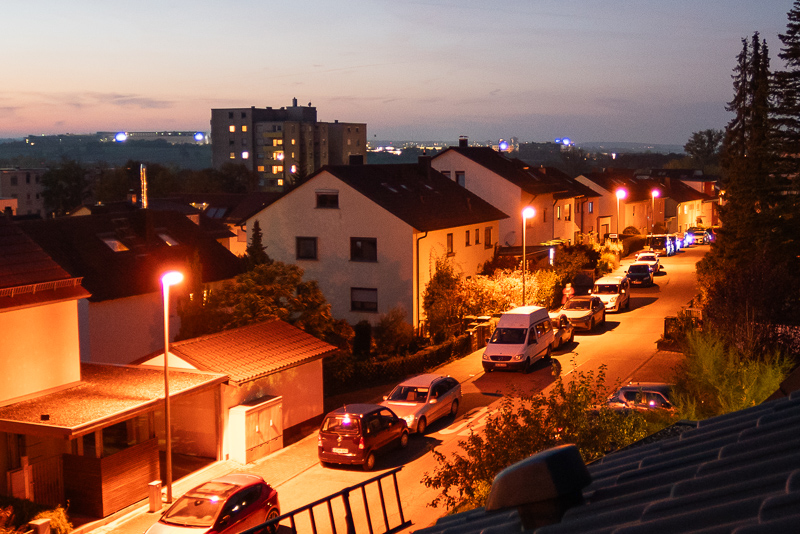
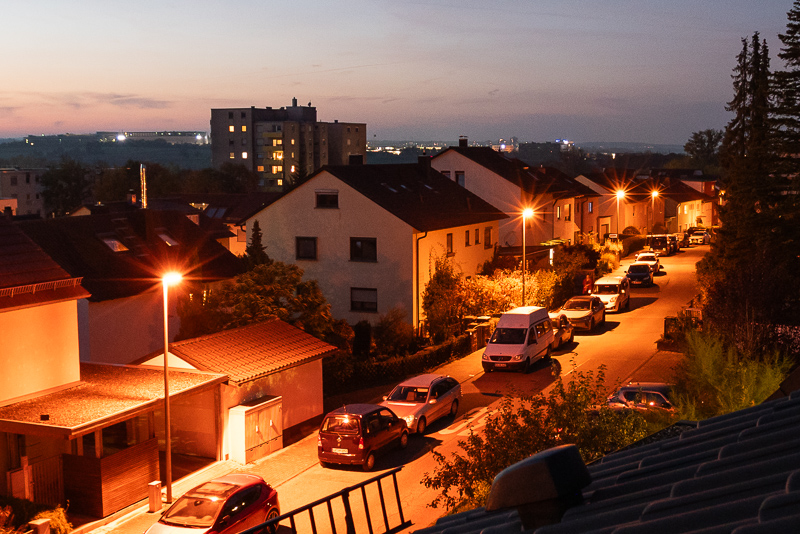
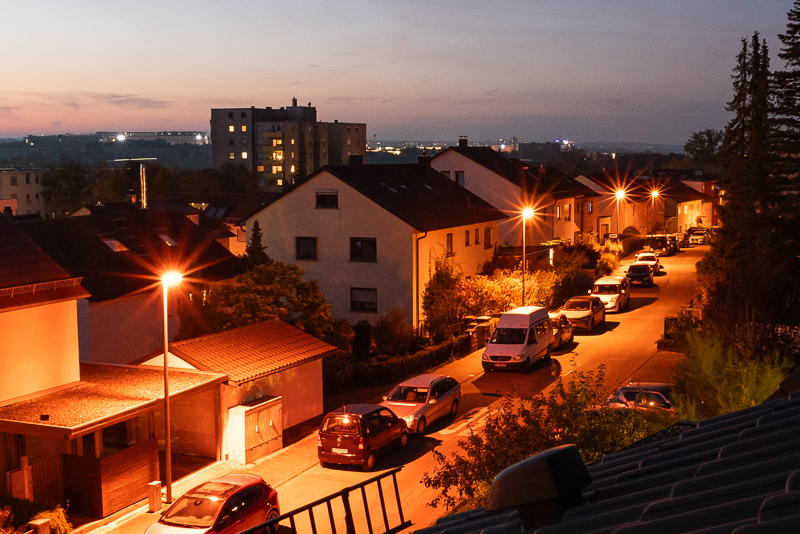
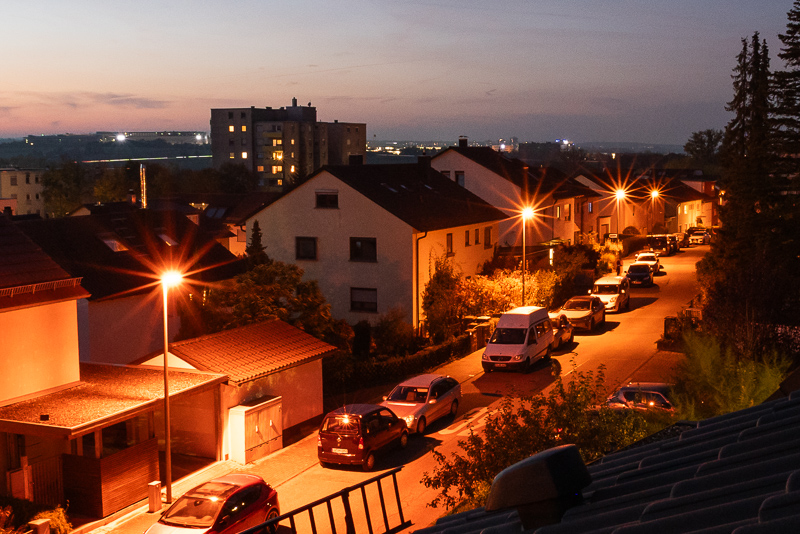
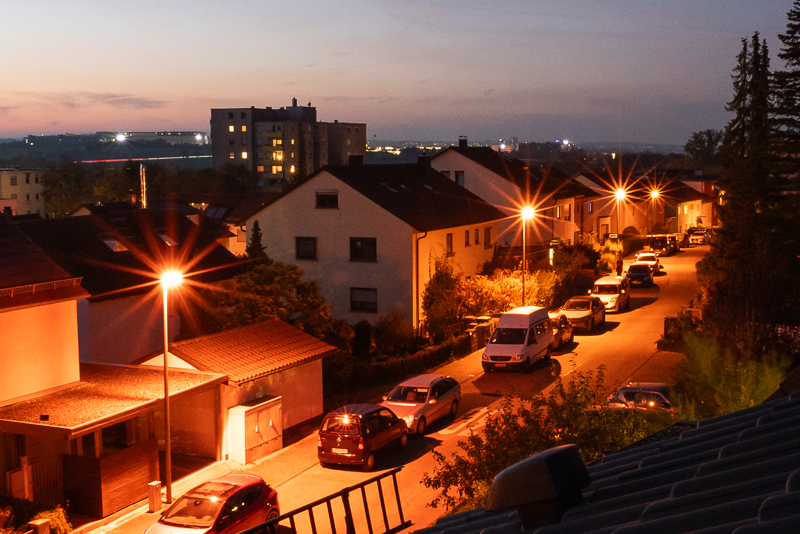
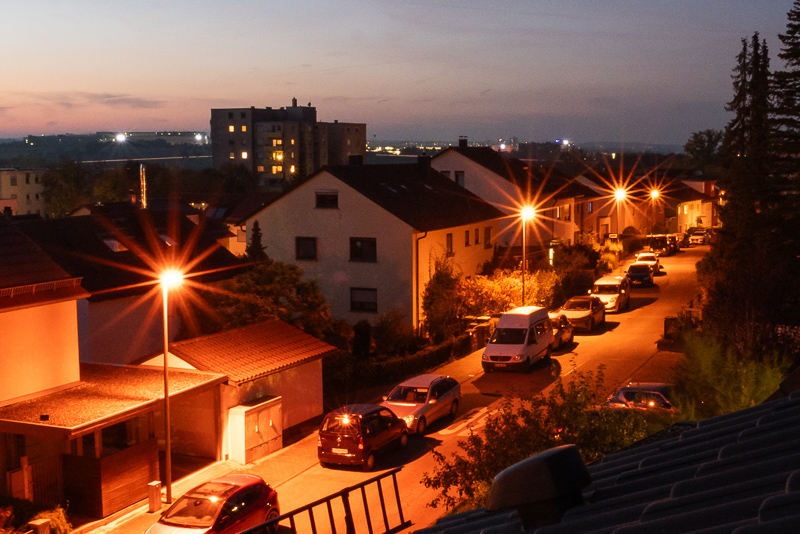
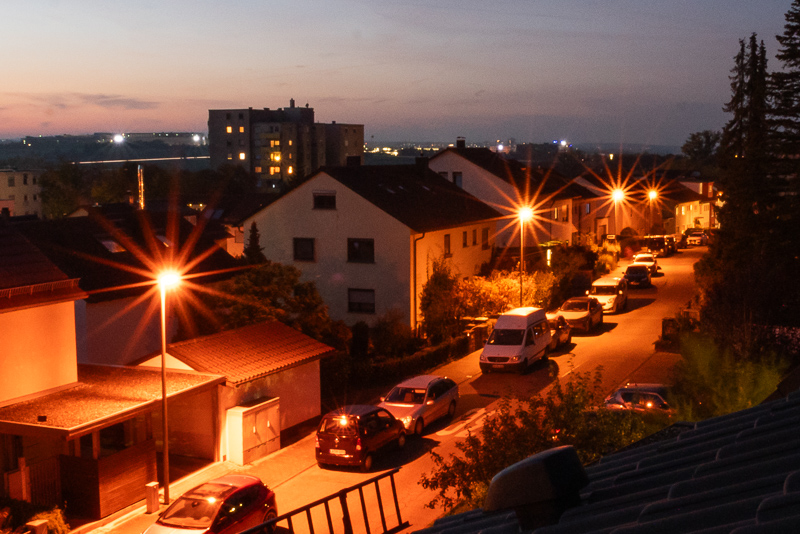
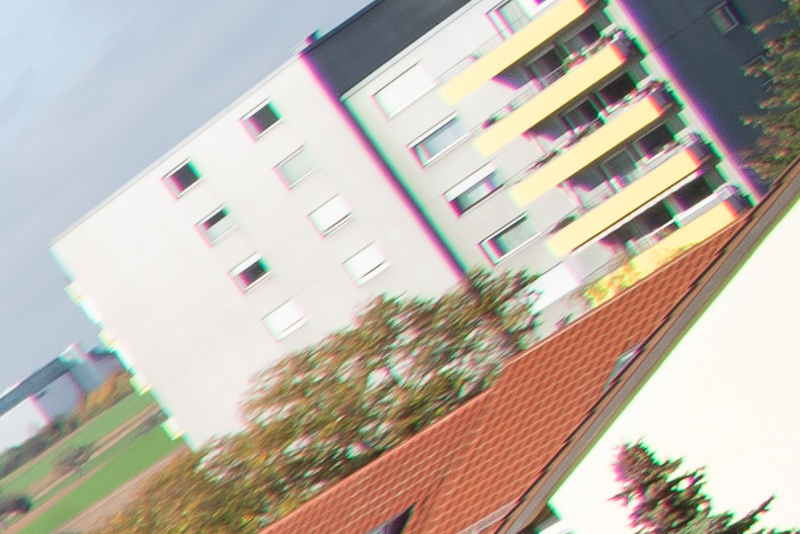
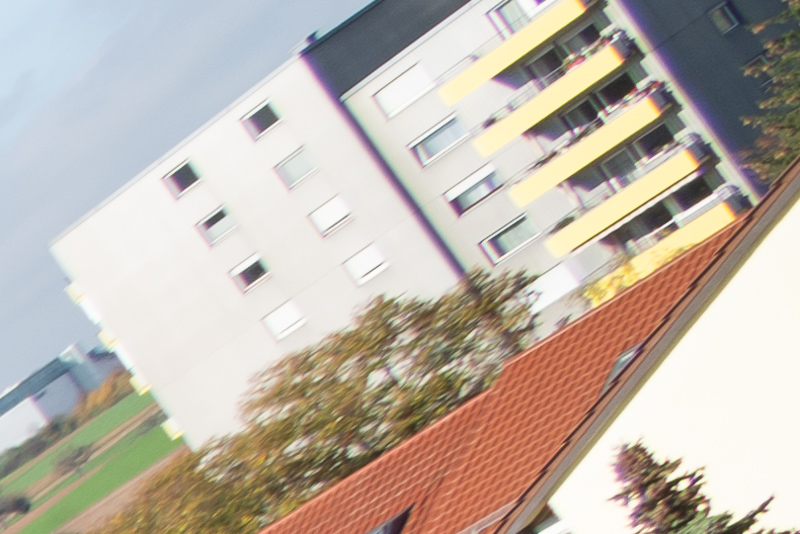

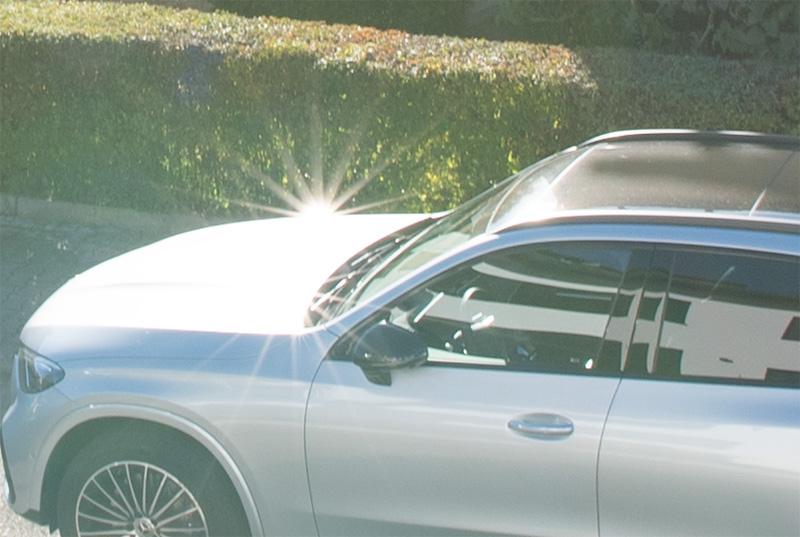
You still took some striking shots with a less than ideal UWA! That flare handling tho, yuck.
If you want to see truly bad flare performance, try the Sigma 14mm f/2.8 (which incidentally is of about the same vintage, or a little earlier). It is terrible, awful, atrocious, you pick the adjective. Besides, it was already iffy for IQ on Canon 1D series bodies, but on full frame, it’s in a whole new dimension of horror. I still loved mine because it gave me a lot of memorable (and well received when published) photos, but I scarcely use it now. Would be impossible to sell, too.
Shows how far the lens design has come in all these years… actually not all these years, because, as you noted, the Nikon 14-24 from 2007 was already unbelievably good – unbelievably for the time when most UWAs were loaded with compromises like this Nikon prime or my dear old Sigma.
How important would you rate AF in ultra wide angle lenses?
My impression is always that this is the focal length where it matters least – the DOF is anyway large.
I have some manual UWA lenses and didn’t really miss AF so far.
For me personally, not important at all.
I usually prefer manual focus for UWA lenses actually.
BTW as far as the alternatives go, there’s the Sigma 14-24mm f/2.8 for DSLRs. It was rather good, per the test found at OpticalLimits. They also tested the Sigma 12-24mm f/4, which was spoiled a little by atrocious field curvature at 24mm, but was pretty decent otherwise.
“…the correct flange focal distance is detrimental to achieve optimal performance…” Sorry, I don’t understand this at all. The correct flange focal distance makes performance worse?
Typo, my bad.